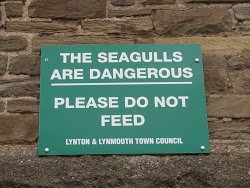It was a happy coincidence that I have been working through a reading of Vygotsky’s Mind in Society (1978) for another class, and noticing the synchronicity between the long-deceased Soviet cognitive psychologist and the literacy specialists read this week. So much of what Kress and Street have to say about pre-reading or pre-literate people can be found in Vygotsky’s writing. The one line that led me into this connection was “written sign frequently are simply gestures that have been fixed” (p. 107) onto a page in squiggly shapes otherwise known as letters. Kress makes a similar meaning similar images as well, when recalling a day at the beach upon seeing a print of seagulls snacking on fish and chips. His daughter makes her own meaning, and Kress dotingly examines the complex process that his daughter must have went through to understand that the gulls are reading the newspapers rather than eating the left-behind food. It probably did occur to this three-year old girl that the birds might actually be eating, as she has been to a beach before and probably seen what seagulls actually do in their natural habitat. But being able to see more meaning than the picture, or the visual text, suggests is the playfulness that comes with pre-literacy, where the signs are not as fixed as the sign-makers intended them to be.
The title of the print, interesting enough, is Fish and Chips Seagulls and the extra spaces between the hendiadys and compound word (my fancy etymological way of pointing out these italicized squiggly lines have names) suggest other words could fit between them. The most telling would be …on Newspaper, Picked at by… but this three-year old girl isn’t interested in making sense of the first signifier. Instead, she wants to claim this portrait as Newspaper, Read by… as it is more amusing than the maudlin reality depicted, that some creature thrive off of the waste human being leave behind. Her father raises a similar point, noticing the headline on the print’s newspaper and commenting on the irony of newspapers decrying overforesting while the entire newsprint industry requires trees to be cut down (even with recycling). His musing on this topic may be more sophisticated, but if asked by his daughter, “why is there so much garbage left behind on beaches?” or “How many trees were cut down to have their processed remains scattered about?” – big questions for a three-year old, but something along those lines – what answers would he have for her?

Make meaning of this sign, Kress!
Speaking of seagulls, I was fascinated to learn that early in Vygotsky’s career he taught theatre at an adult education centre in his hometown of Gomel, Belarussia. One theory I have about young Lev was his fascination with playhouses and theatre, and it is entirely possible (though not confirmed) that he would have caught productions of innovative theatre by the great playwright Anton Chekhov, possibly while the artist himself was still alive (his initially disastrous debut play was successfully restaged in 1898, the same year Vygotsky was born). The Moscow Arts Theatre still uses the image of the seagull out of respect for Chekhov’s first play. Being an undergraduate in Moscow, or perhaps seeing a touring production of any one of Chekhov’s plays, possibly even directing his students in Uncle Vanya or Three Sisters might have inspired Vygotsky to examine the people’s roles within a family, closely attuned to how play helps children develop psychologically. There might not be anything to this theory at all, just my strong sense that Chekhov and Vygotsky would have shared a connection, other than the grim fact that they both died of tuberculosis; two promising careers ended! And yet the cultural impact of both of their collections of handwritten pages would have on generations that followed is impressive.

Chekhov’s Seagull
Not many birds were mentioned in Street’s article, but there is still a sense of human migration and roles within pre-literate cultures in the chapter. Particularly where religion is involved, whether it is sermons pounded into people’s heads on Nukulaelae, or competing Christian and Islamic rules for reading and writing in the Philippines, Malaya and Sumatra. Even the Hmong people in Philadelphia, I believe, have some ideological issues that chased them out of Vietnam and Laos. Like many other cultures involved with dominant cultures invading, there is a certain amount of adaptation involved that combines ways of representing culture from the non-dominant as well as concessions made towards understanding of “them” and “their” ways. New Literacy Studies, as Street suggests, is an acknowledgement of the many variations literacy can take, and it is refreshing to see academics opening up to these ideas. The same cannot be said, however, for Heath’s close examination of three types of communities: the educated swells in Maintown, the trashy workers in Roadville and the former slaves in Trackton. I now see how her way with words was influential for language and literacy scholars, but I could barely get past the first paragraph of her abstract. She set up the dichotomy of rich vs. poor, white vs. black that I couldn’t really take her seriously. Yes, it was a different world back in the early eighties, where direct quotation in Ebonics may have provided a researcher with ethnographic street cred, but when the Tracktonian vernacular is used to demonstrate how hopelessly undereducated these people are, it gets embarrassing to read. Similarly, poor lil’ Wendy and her disinterest in listening to bedtime stories was disturbing from a social constructivist point of view. All that Aunt Sue and other adults seem to do is reinforce the dread of reading, and cuts off imaginative play with squiggly shapes on a page. After this article, Heath will have a hard time winning me over, but I am willing to find out more.
Reference
Vygotsky, L. S. (1978). Mind in society: Development of higher psychological processes. Michael Cole and Sylvia Scribner (Eds.). Cambridge: President and Fellows of Harvard College.


